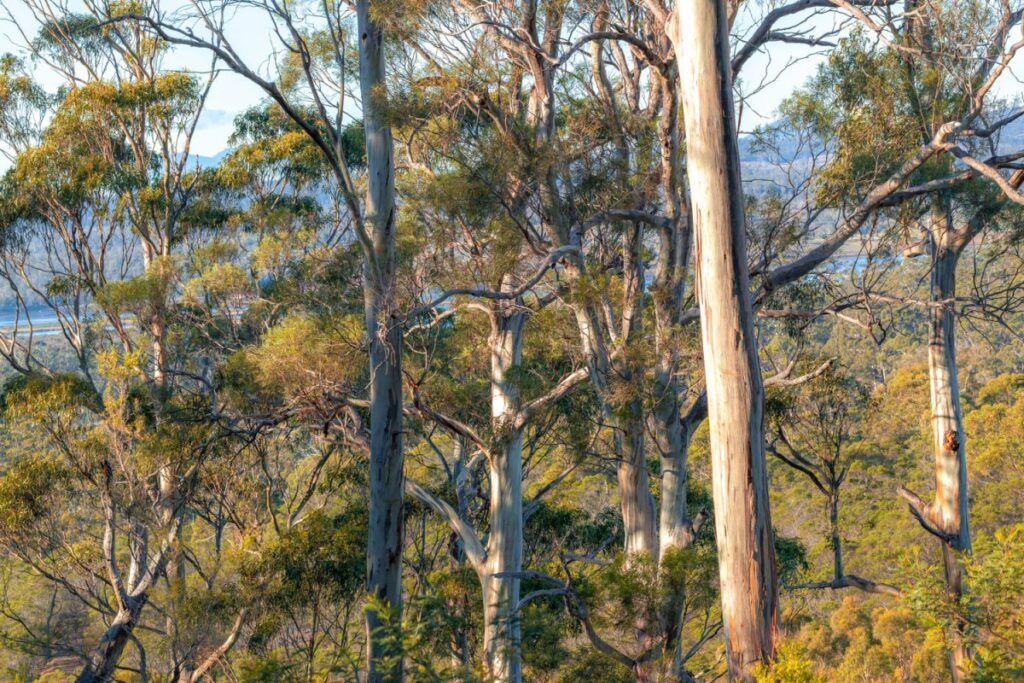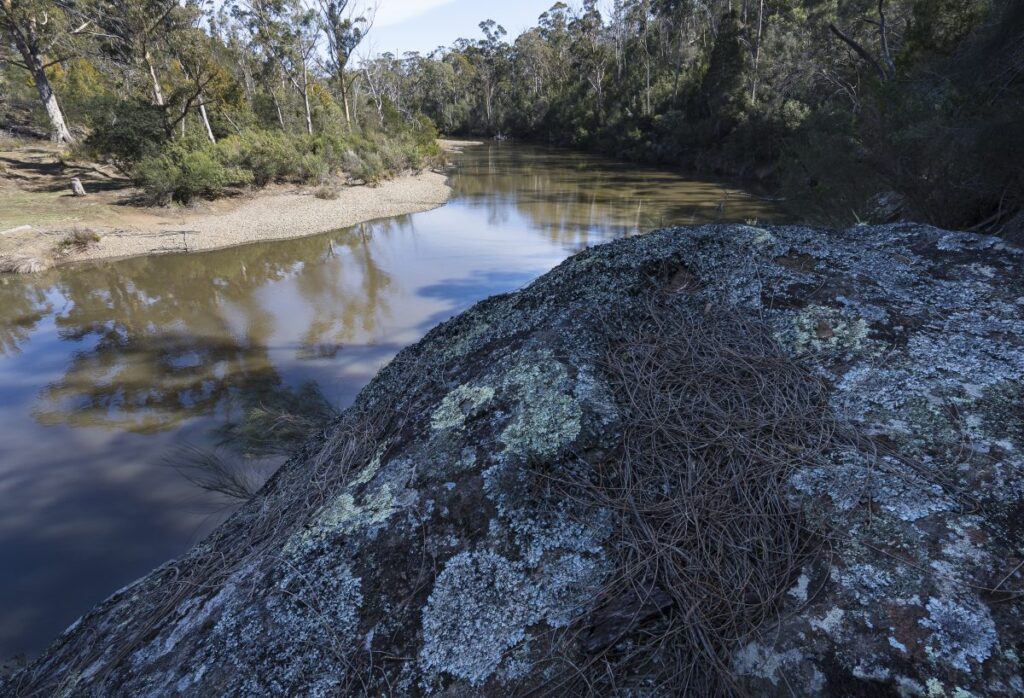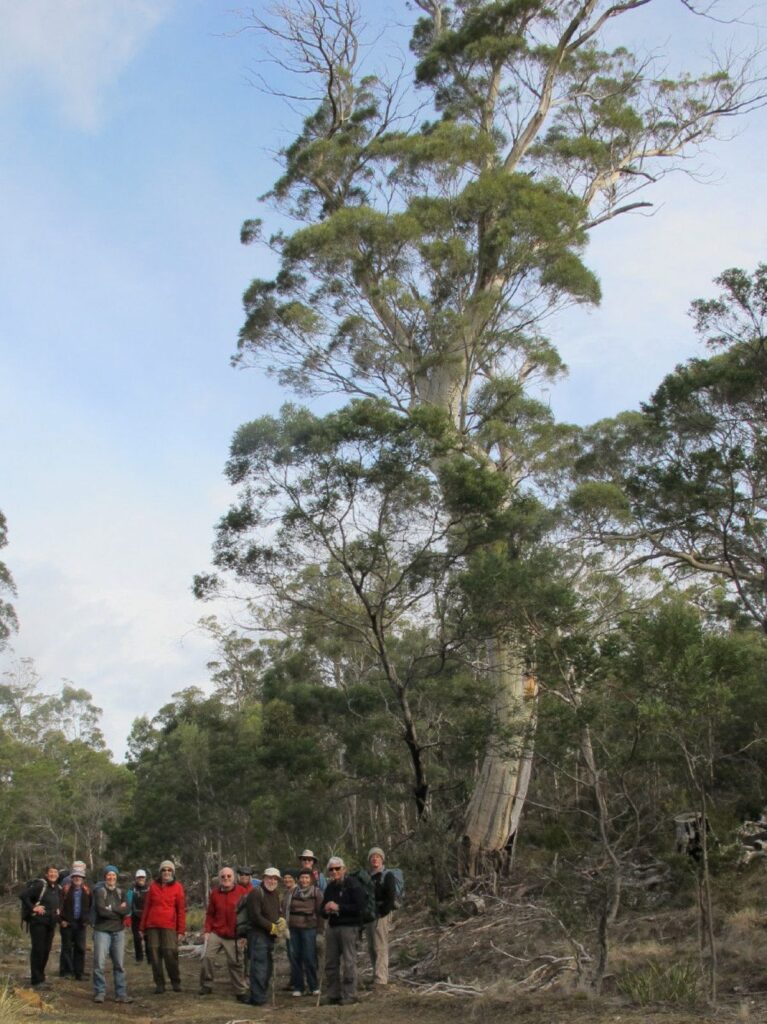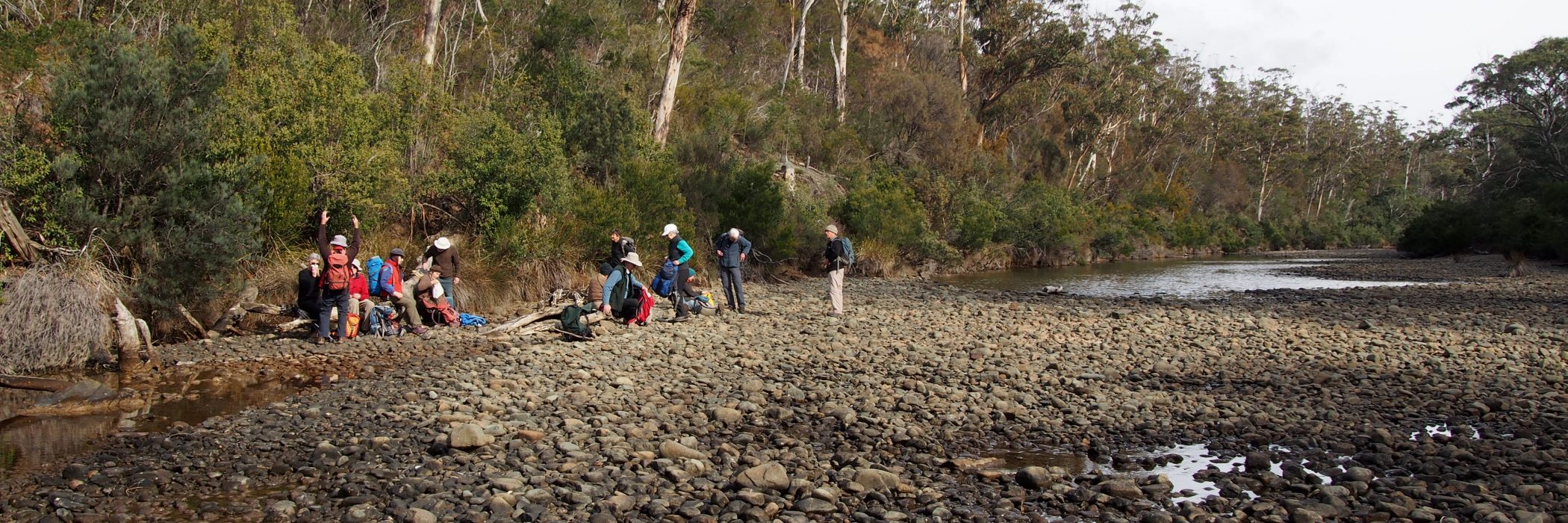Botanic buffs approve of newest reserve, without reservation
TLC’s Little Swanport Reserve recently received rave reviews from visiting Australian Plant Society Tasmania members.
The Little Swanport River drains a large part of inland eastern Tasmania, rising just east of Parattah and cutting through a series of dolerite gorges before debouching into a large estuarine wetland called Little Swanport, halfway between the townships of Triabunna and Swansea. Much of the country is open forest and grassy woodland, with some grazing properties near the coast. The Tasmanian Land Conservancy’s latest acquisition, this year, was a 150 hectare block near the mouth of the river, acquired in part because of the presence of some old-growth blue gum forest with nesting habitat for swift parrots.

Long term Tasmanian Land Conservancy supporters and Australian Plant Society Tasmania members, Keith and Sib Corbett, were fortunate enough to attend the TLC’s Discovery Day at Little Swanport in September last year, with experts such as TLC’s Dr Sally Bryant. They were keen to show other APSTers around the new reserve if the opportunity arose, which it did on August 4, when 15 walkers assembled near the entry gate to the reserve on Bresnehans Road.
Some interesting background was provided by attendee Jenny Boyer, whose Mitchelmore forebears owned the surrounding property, Muirlands, for about a century from 1882. They ran superfine merinos for some of that time. After the original house was destroyed by floods in 1908, the present homestead was built on an elevated terrace near the main road in 1913. Jenny visited as a small child in the 1950s, and recalls that there was a special wing with six bedrooms on the house for bream fishermen to stay. Other memories include ‘invading’ the huge central dining room lit by lamps and candles, separating the milk, and the large mulberry tree in the front garden. The original property has now been broken up, with the sheep removed from some areas and the bush recovering.
The rocky bank fronted a wide deep part of the river, with pleasant views, known as the Bream Hole, apparently well known to fisherfolk. This is about as far west as the salt water extends inland.
— Keith Corbett
Keith Corbett explained a little about the geology – it’s basically all dolerite, with some ironstone gravel in places formed during a warm tropical period some 50 million years ago. In the northern midlands similar ironstone gravels support a special Eucalyptus amygdalina woodland community rich in unusual heath species, but here there is almost no undergrowth.
We turned north and followed a track down to the river, through some nice old forest with bluegum (E. globulus), white gum (E. viminalis) and white peppermint (E. pulchella), with pinkberry bushes (Leptecophylla divaricata), prickly moses (Acacia verticillata) and sedges. The rocky bank fronted a wide deep part of the river, with pleasant views, known as the Bream Hole, apparently well known to fisherfolk. This is about as far west as the salt water extends inland. Nearby were bushes of common fringe myrtle (Calytrix tetragona) and smooth dustymiller (Spyridium obovatum), growing under numerous oyster bay pines (Callitris rhomboidea). A riverside Epacris is yet to be identified by us – the betting is that it is one of the rare white ones.

After morning tea, our next section was a scramble up the nose of a rocky dolerite spur, picking our way through many oyster bay pines, past a lookout point with a fine view up the river, and across the flat top to some old paddocks. Drooping sheoaks (Allocasuarina verticillata) and a single small greenhood orchid were noted. The open walking was through kangaroo grass (Themeda triandra) and saggs (Lomandra longifolia), with clusters of peachberry heath (Lissanthe strigosa) and native cranberry (Astroloma humifusum), many thickets of black wattle (A. mearnsii), and some grand old burnt eucs in places. This eastern side of the property is severely degraded by clearing, grazing and drought, but there is now some hope of recovery. Heading down another berry-bush-lined track towards the river, we stopped for a photo beside a superb old Eucalyptus pulchella with a nicely curved trunk, then down a steep section to a Pomaderris elliptica forest before breaking out onto the wide pebbly bed of the river – with very little water flow. Damage and debris in the flanking bush shows that the river is not always so benign. Lunch was had on dry logs near the western shore, under rocky cliffs with sheoaks, pomaderris and Acacia mucronata. The remains of a flying fox cableway were found on the rocks, with the other end well up the trunk of an old gumtree. Fun and games in the past, we presumed.

Retracing our steps and crossing some more old paddocks in very pleasant walking conditions, we climbed to the rocky top of the highest hill (all of 110 m!) on the property, passing some superb old Eucalyptus pulchella and E. globulus with quality nest holes available (water views from some). Then down on to a grassy terrace with lovely views to the east of the Freycinet mountains, and further south to Maria Island, for afternoon tea. We lounged, with the sun on our backs, and decided it was a pretty hard life! An easy walk downslope brought us back to the cars.
Our thanks to the TLC for allowing us to walk over this lovely place, and we all agreed that the Little Swanport Reserve was an excellent acquisition.




